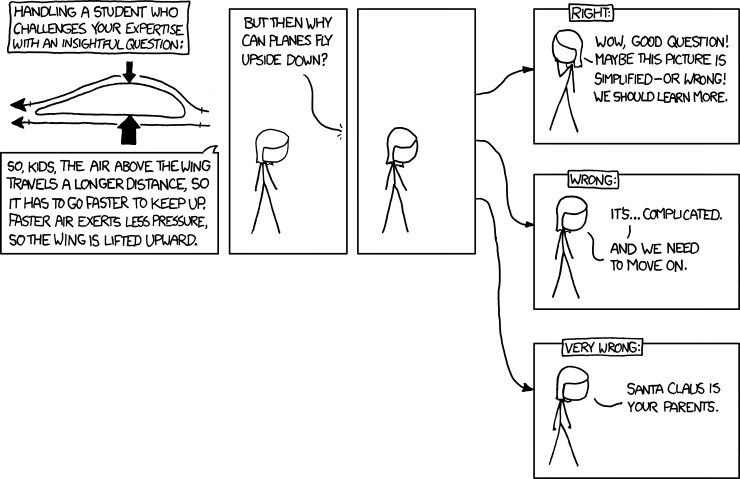And every year, I wind up hating myself. So much so that I might add to the Army's rising suicide rates.
Why?
Invariably, I find that I'm always asked to diagram the forces which act upon an airfoil.
According to the Army, the "correct" answer should sound familiar to anyone who paid attention in middle school: based on Bernoulli's Principle and the Venturi Effect, there are pressure differentials between the upper and lower halves of an airfoil which cause it to raise into the air.
Unfortunately, this explanation is bogus.
NASA says so.
You see, the mystery of lift lies not with Bernoulli, but with Newton--specifically, with his Third Law of Motion. Unfortunately, bad science has made its way into textbooks, encyclopedias, and even Army field manuals. Bad theories of lift are as pervasive and widely-believed as the myth that a bathtub drains in the opposite direction in the Southern Hemisphere.
Thus, every year, I drive myself nuts trying to explain lift to the examiner by invoking Newton's Third Law of Motion.
This year, I think I'll do my blood pressure a favor. I'll just nod, smile, and draw a cartoon about an airfoil "splitting a molecule of air" and having both parts of it meet each other on the other side of the airfoil at exactly the same time.
I seriously need to pick my battles in life.
Note: On page 2-8 and 2-9 of the Army's Field Manual 1-203, Fundamentals of Flight, variations on the "Equal-Transit" theory are offered as the predominant theory, occupying much of the section. Four lines are dedicated to a theory invoking Newton's Second Law, stating that "the production of lift requires that a mass of air be accelerated to a final downward direction and velocity". (Not the Third Law, as NASA claims)
FM 1-203 alludes to a downward turning of air in Chapter 6, but links it, inexplicably, with induced flow.
Suffice to say that NASA's version of lift is largely unknown in the Army Aviation community. Classroom instruction invariably mentions only the "Equal Transit" theory.
Focus: Are there any other instances of bad science that drive you up the wall?

4 comments:
Waitaminute ... the Army forces its aviators to spout and recite incorrect physics!?
q: how does an airfoil work?
a: centrifugal force.
checkmate.
This is what leads to all the argument over the question of whether an airplane on a conveyor belt can take off or not.
Homeopathy, simply because it's so ridiculous...
Have you heard of Ben Goldacre? He has a column in The Guardian called "Bad Science".
Post a Comment